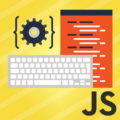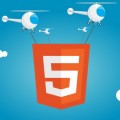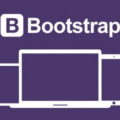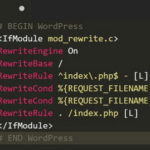15 Tips: How To Choose JavaScript Framework
JavaScript continues to rise in popularity. IBM named JavaScript the best programming language to learn. Today, it is used on both the client and server sides. Javascript helps design interfaces that are beautiful, meaningful and highly responsive to functions and features.
Javascript frameworks act as the backbone of web application development. Developers don’t have to worry about code or its maintenance while they focus on creating high-quality software.
JavaScript is also becoming fast and super stable. Many frameworks have already made rounds in the community and have attracted a loyal team of programmers. In this post, we are going to highlight the most popular frameworks of today that are going to see increased growth, engagement, and exposure.
1. For Flexibility: Angular JS
This one is a Model View Controller framework based on the idea of creating templates to make a dynamic HTML. The idea is to separate presentation logic from business logic. This framework provides you with a set of quality assurance tools to build the structure that is most suited to your organization. Single page applications widely use Angular JS.
2. Using other frameworks: React JS
This framework is not like Angular JS. It is created to work in unison with other frameworks on the client side and the server side. React JS is like an extensive library of JavaScript. This front-end library enables you to create UI components that can be used multiple times. The Virtual DOM creation in React JS improves the performance of your apps and works well with complex web applications.
3. For simplicity: Meteor JS
Meteor JS is also a popular JavaScript framework which is known for its simplicity. The features that deepen its impact include back-end development, front-end render, business logic and database management. Apps built by Meteor are real-time by default. Its community packages are like a breath of fresh air. However, this one is not suitable for complex application development.
4. For custom events: Backbone JS
Backbone is a Modal View Presenter that makes models with value-binding custom events. This framework is popularly used for SPA applications. It provides event-driven communication and can sync with the back-end. Applications created by Backbone JS are well-structured and organized.
5. Lightweight and efficient: Node JS
This framework is event-driven, running on a non-blocking I/O model. The event-driven feature improves work efficiency. It is very fast to work with and comes with zero buffering. Node JS is a popular JavaScript framework of today.
6. For variety: Angular2
This framework is packed with a lot of features that will help you build just about anything from the web to desktop and mobile applications. It makes JavaScript agile. This framework is more suitable for large enterprises. It can work well with strict programming environments with high standards of code maintenance.
7. For speed: VueJS
Vue was introduced in 2016 and is a combination of multiple frameworks we have seen before. It is the fastest of all, putting all the features into one handy package. It offers two-way data binding and optional support for JSX. Quick developmental procedures can be easily handled with vue.js.
8. Efficient production: Stapes
The makers of this framework believe that they can help you create something truly extraordinary. Its primary focus is on class creation, custom events and on bridging the gap between traditional and modern application building.
9. Reliability: Ember.JS
In 2015, Ember was called the best JavaScript framework. Today, a huge online community of people rely on this platform. It helps improve the performance of complex UIs. Some of the top users of this interface are Chipotle, Nordstrom, LinkedIn, and Netflix. Its learning curve is easy, and many tutorials are available online.
10. For fast development: KnockoutJS
Your test repository shouldn’t give you a false image of quality. In reality, Test case count with the manual process of Change Management is misleading, and most of the effort in “maintaining” this repository is going down the drain. (Accelq)
This framework is part of the older tools used in JavaScript. It ensures your UI stays organized and synchronized with all its data. Templates and dependency tracking are two of its key features. Knockout.js is small and lightweight. However, large projects can become complex with this framework.
11. Highly functional: Moby
You can observe your data structure more effectively with Moby. Take any strip of data from your structure and line it into a separate row. It is highly functional with auto-updating formulas. Create effective views that are always rendered.
12. For clarity: Omniscient
Omniscient provides developers with tools to create functional UIs. You can adopt a more static model for development using this framework. You can still manipulate your Views. Omniscient creates small and composable components that are highly functional. It is clear because it eradicates the need for templating engines or domain-specific languages.
13. Responsiveness: Mercury
Mercury is a lightweight and simple framework that provides a number of web modules that you can implement in your apps. The demo page showcases functions like real-time changing of elements. You can create multi-dimensional web applications through this robust space.
14. Receptiveness: WebRx
It is also a Model View ViewModel framework that combines functional and reactive patterns of programming to support receptive data binding. You can build everything from fully-functional pages to a simple Hello World.
15. Reaction-based: RiotJS
React builds the foundation for most of the reactive Javascript frameworks of today. It is a react-based library which focuses on micro-level functions. It also has a prominent discussion community where people share tutorials and tips on a daily basis. The framework is highly interactive. You should expect the same features in your apps that are created through RiotJS.
How to choose the best framework?
Opting for a JavaScript framework should never be a difficult ordeal. The term ‘next generation’ sounds very promising, but you should pay attention to the core features of your support framework.
Some frameworks are older and have an advanced user base, while some frameworks are popular because of new features. In both cases, a framework is created by professionals with years of experience in their fields.
Focus on the platform which is most suitable for your development and programming needs. Have you tried any of these tools before? Let us know your observations in the section below.










































